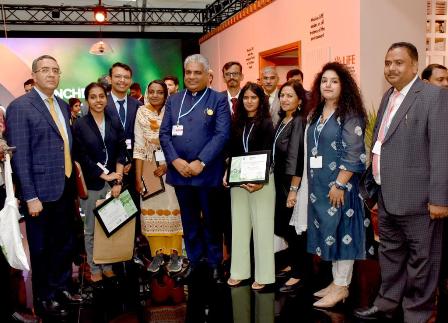Conference of Parties: A Way for a Safer Planet or Just a Naught?
The core problem of climate finance, which developing countries have long demanded, is evident at COP27.
The United Nations Climate Change Conference, also known as the Conference of Parties, held every year since 1995, is the supreme decision-making body under the United Nations Framework Convention on Climate Change (UNFCCC). Reviewing the national communications and emission inventories that Parties have provided is one of the COP’s primary responsibilities. Based on these data, the COP evaluates the outcomes of the actions taken by Parties and the advancements made toward fulfilling the primary goal of the Convention.
year since 1995, is the supreme decision-making body under the United Nations Framework Convention on Climate Change (UNFCCC). Reviewing the national communications and emission inventories that Parties have provided is one of the COP’s primary responsibilities. Based on these data, the COP evaluates the outcomes of the actions taken by Parties and the advancements made toward fulfilling the primary goal of the Convention.
Berlin, Germany, hosted the first COP gathering in March 1995. Unless a Party volunteers to host the session, the COP meets in Bonn, the secretariat’s home city. The location of the COP frequently changes among the five UN-recognised regions: Africa, Asia, Latin America and the Caribbean, Central and Eastern Europe, and Western Europe. This is also true of the COP Presidency, which alternates among these regions yearly. Since 1995, only a few COPs have made history with their accords. Industrialised economies were obligated by the Kyoto Protocol, which was agreed upon at COP3 in 1997, to restrict and lower greenhouse gas emissions (GHGs). The 2015 Paris Agreement, the outcome of COP21, called for member nations to limit global warming to no more than 1.5 degrees Celsius above pre-industrial levels. COP26 in Glasgow was supposed to “phase down” the unabated coal power. However, these agreements’ goals are still far from achieved.
This year Egypt hosted the 27th COP in Sharm El-Sheikh, which aimed to quicken the pace of global climate action by reducing emissions, stepping up adaptation activities, and increasing the flow of suitable funding. Additionally, it has shown that “just transition” is still a top goal for developing nations worldwide. However, COP27 seems to be an extended version of previous COPs, where negotiations revolved mainly around the issues of mitigation, adaptation, finance and collaboration.
On the mitigation issue, the parties continue to uphold their promises and obligations to achieve the goals of the Paris Agreement and advance the Convention’s implementation. One of the key objectives of COP26 was the Global Goal of Adaptation. The COP27 also saw the urgent need for development and asked all parties to exhibit the required political will to track and evaluate our advancements in boosting resilience and helping the most vulnerable populations. The core problem of climate finance, which developing countries have long demanded, is evident at COP27. It has made some progress by bringing it up during the loss and damage conversation. Collaboration is also one area envisioned in the aims and objectives of COP26. Developing partnerships and collaboration was also intended to ensure the adoption of a more resilient, sustainable, and human-centred economic model. Thus, COP27 is not something that can be celebrated. It is the same previous content wrapped in a new format.
Environmental threats are multiplying day by day, damaging nature and directly impacting the lives of millions. Climate change has resulted in irreversible losses to natural ecosystems, according to the IPCCC assessment report, which also warned of severe consequences for food security, human health, and biodiversity loss if carbon emissions from human activities are not significantly reduced. According to the analysis, even 1.5 degrees Celsius poses a danger of extinction for 3–4% of all species on Earth. In its report, the World Resource Institute (WRI) likewise presents a bleak picture. It estimates that to achieve the 1.5 degree Celsius goal by 2030, global emissions must be reduced at a rate six times faster than they are now.
COP seems not to be an effective way to tackle the climate emergency that the planet is facing now. The platform might be good for making awareness of environmental threats or climate change, but the problem lies with the path of development that almost every country follows. The ongoing development model believes in production and consumption and is a big hindrance in safeguarding our planet. The planet needs an alternative model of development, which should not prey on nature and promote consumerism. The development model must be inclusive and consider nature as the top priority at every level of policymaking and implementation. Promotion of tracing and adopting the traditional roots of dealing with environmental disasters are the ways to deal with the ongoing climate crisis.
